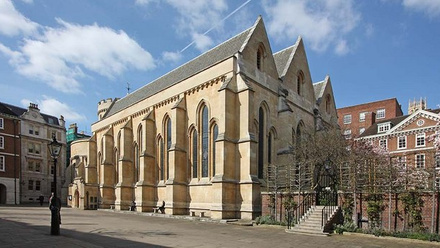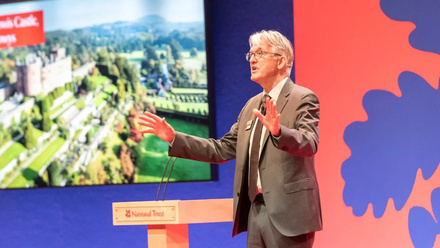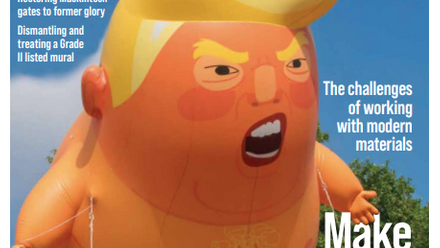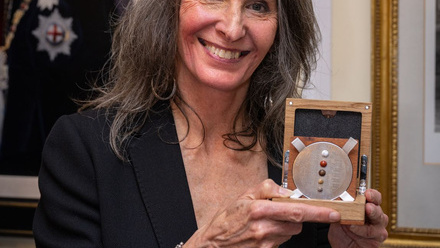Funding for culture: Budget scrutiny 2023-24 (Scotland)
On 24 June 2022, the Constitution, Europe, External Affairs and Culture Committee launched a call for views on Budget Scrutiny 2023-24: Funding for Culture. This Call for Views was a follow-up on the Committee's previous pre-budget scrutiny work on Funding for Culture. The Committee agreed to focus primarily on the culture spending portfolio in its pre-budget scrutiny.
The comments and suggestions made by Icon were included in the Committee's report to the Scottish Government.
Icon's response was based on views and ideas shared by the Icon Scotland Group, and can be read below:
How are budgetary decisions supporting the recovery of the sector from COVID and what should be the Scottish Government’s priorities in supporting recovery through Budget 2023-24?
There has been a lack of investment in cultural heritage infrastructure for many decades while at the same time the burden of maintenance and repair is increasing. A good example is the high-level condition survey currently being carried out by Historic Environment Scotland which has shown that the collection of extremely important historic sites care for by HES on behalf of the people of Scotland is at considerable risk from climate change and other factors. Many sites have been closed or had their public access reduced as a result of safety fears. Unless substantial capital funding is provided to tackle the growing maintenance and repair backlog these vital assets will not be able to contribute to improving the nation’s cultural literacy or health and wellbeing in the future. The chronic underinvestment must be rectified in order to allow our heritage assets to deliver their public benefit.
Despite an increasing recognition of the established health and wellbeing benefits of culture, the Committee has previously heard that this had not led to transformational change in terms of both a cross-cutting approach within Government and increased budgetary support for culture across a number of spending areas.
What needs to change to embed culture and health and wellbeing across government and the public sector?
Local authorities are taking steps to bring culture and wellbeing closer together (e.g. City of Edinburgh Council has created a new Directorate of Culture and Wellbeing) but practical outcomes have not yet been observed. There is no clear framework, or investment in infrastructure, to enable the two service areas to work together in an embedded way. While there have been some successful small “one-off” projects there is little visible evidence of tangible investment in permanent, broad-impact change. Icon recommends greater investment in national pilot schemes for example social/cultural prescribing. The pilots should be carefully evaluated and initiatives that are found to have positive outcomes should be rolled out with accompanying funding across local authorities/NHS trusts. Embedding wellbeing practice within cultural activities and cultural institutions is not possible without additional ongoing funding to support staff posts, staff training and development, and greater resourcing and promotion. As things stand current funding levels prohibit any substantive, meaningful change.
Government funded museums and galleries are increasingly focussed on their contribution to wellbeing, but they have not received increased budgetary support to help with this.
The Scottish Government’s independent Advisory Group on Economic Recovery in the wake of COVID-19 recommended that Ministers should in relation to the creative sector seek “ways to increase public and private investment across the sector to allow it to recover and compete”.
Can you provide examples of where this is happening or ways in which it should happen?
Within local authority settings, any income that is generated by museums services (from ticketing, events, retail, private hire and filming) is rarely retained with the museum service or re-invested in the service. As a result local authority museums services are often wholly reliant on public funding (primarily through the Government endowment and Museums Galleries Scotland funding cycles) which allows no scope for the growth of the service or for creating sustainable long-term changes. The majority of current projects are only short-term and delivered on a shoestring, which means that they rarely result in a successful legacy.
Heritage organisations which are funded directly by the Scottish Government are not seeing increased public and private investment, rather the opposite.
The Committee has previously agreed with COSLA that a ‘whole system’ approach is essential to the spending review and that this is consistent with an outcomes-focused and collaborative approach; our view is that it is only through such an approach that the necessary funding can be freed up to ensure that sufficient cultural services are available to meet the increased demand arising from cultural prescribing
What progress has been made in moving towards a whole system approach, what are the main barriers and how do we overcome them?
We have not been able to identify any progress to date. Local authorities are generally slow to make changes and cultural services are often siloed between service areas. Across the country there is little consistency in the way that cultural services are located within local authority structures, which makes it challenging for other bodies, including healthcare providers, to interact with them and to build strategic partnerships, especially where geographical boundaries are not aligned between organisations. These factors jointly create a considerable barrier to change. There is also little capacity for the rapid prototyping, testing and evaluation of new ideas and processes.
The Committee’s view is that it is essential that, wherever practical, multi-year funding for the cultural organisations the Scottish Government supports is passed on to the groups and individuals being funded who should, where appropriate, also receive a multi-year settlement
What progress has been made in moving towards multi-year funding, what are the main barriers and how do we overcome them?
We are not aware of any progress towards multi-year funding to date, despite the fact that most local authority, organisational and sector strategies are generally moving towards 3- or 5-year cycles. Many small non-profit organisations within the cultural heritage sector are still reliant on single-year funding agreements, which makes it almost impossible to plan confidently for the future and to prepare for growth. The lack of multi-year funding also tends to mean that staff are employed on short-term contracts, leading to concerns about job security and the inability to retain knowledge and experience within small teams due to churn. Small non-profit organisations are also by nature very risk averse, which makes them extremely wary of taking on projects or progressing innovative ideas without the comfort of secured funding.
The Scottish Government’s four-year spending review in May 2022 was not positive for cultural heritage organisations which are funded directly by the Scottish Government, because it indicated that the grant-in-aid funding will remain flat for the next four years, which risks organisations running at a deficit.
The Committee has previously stated that the collaborative learning from managing the response to COVID should be harnessed and built upon; for example, in exploring how innovative ways of working such as the shift to digital platforms can enhance the accessibility of cultural activities while at the same time improving health and wellbeing.
What progress has been made in embedding the collaborative learning from managing the response to COVID, what are the main barriers and how do we overcome them?
Digital platforms continue to be used well for public events, for inter-organisation meetings, and for public consultations and engagement. However, it is anecdotally observed that young people, older people and vulnerable individuals respond more emotively and engage more fully with cultural heritage in real life settings. Digital engagement has limitations due to screen fatigue, discomfort/lack of confidence with technology, and a sense of isolation/detachment. Evaluation has also shown that practical skill building is more effective when training is delivered in person rather than online. While offering professional training events online has allowed organisations’ global reach to extend, there is now a concern that local/domestic audience numbers are decreasing.
There are also risks to maintaining a high level of digital provision of activities for both members of the public and within our cultural heritage organisations. Digital provision is only possible where there is continuing investment in digital infrastructure and, perhaps more importantly, investment in measures to address the increased cyber security risk. Cultural heritage organisations will need support to upgrade their ageing IT infrastructure and also for staff training as part of wider programmes to manage the cyber security risk.






